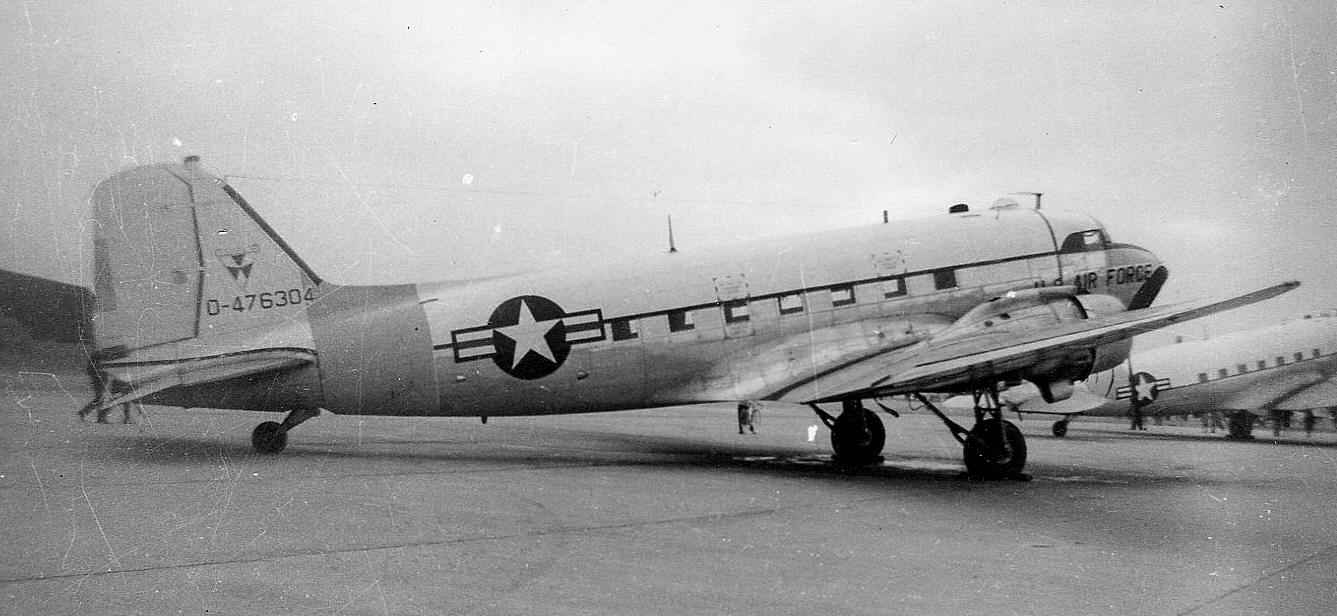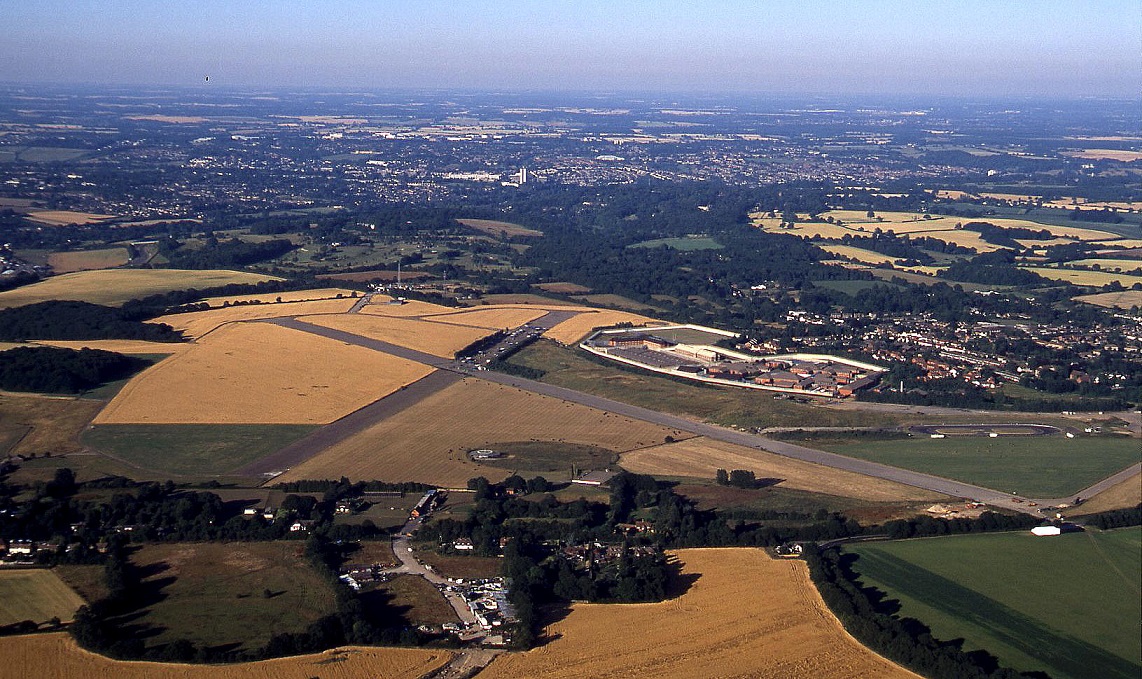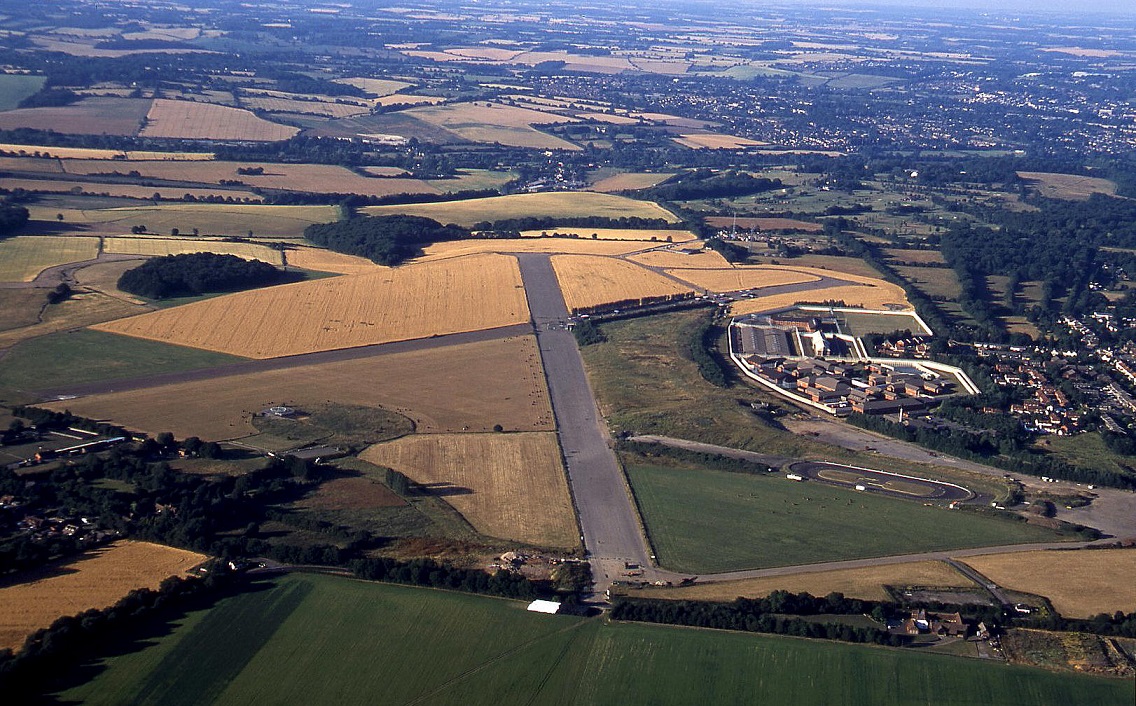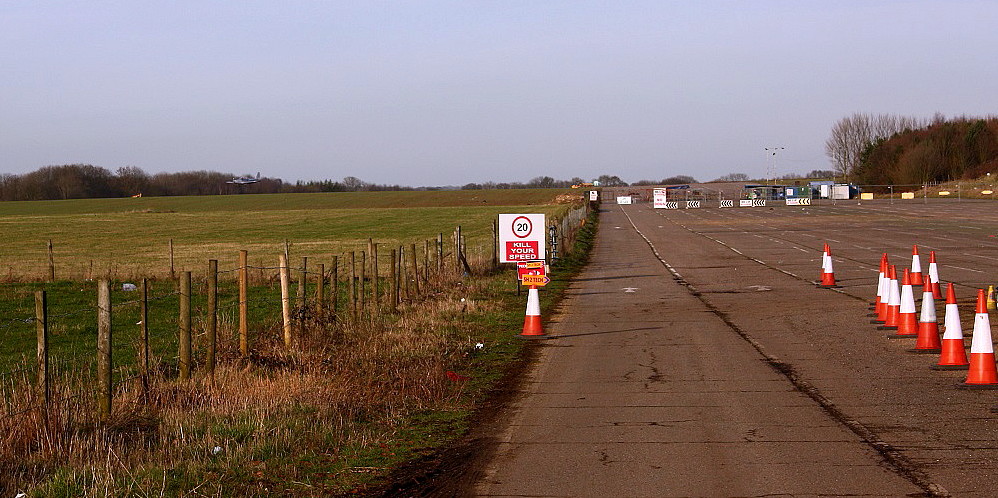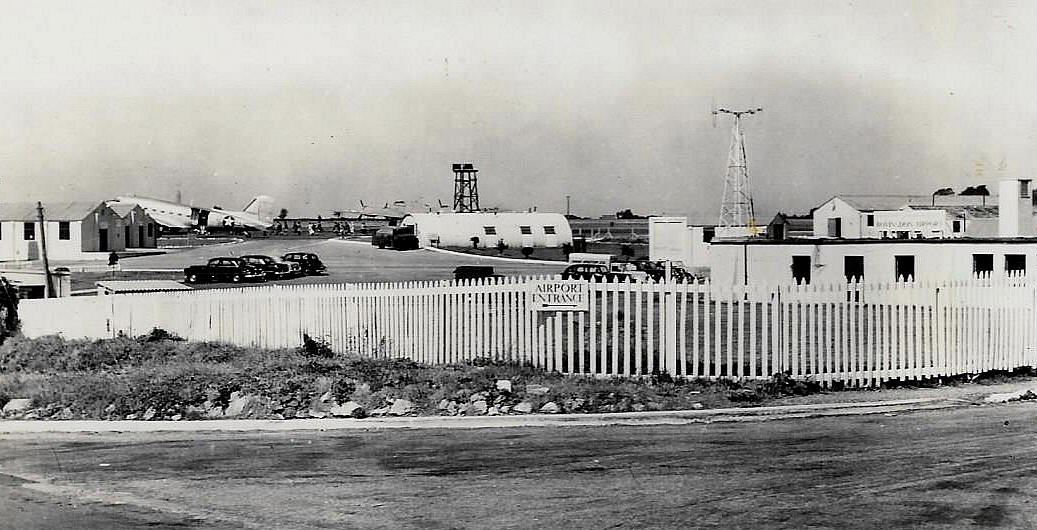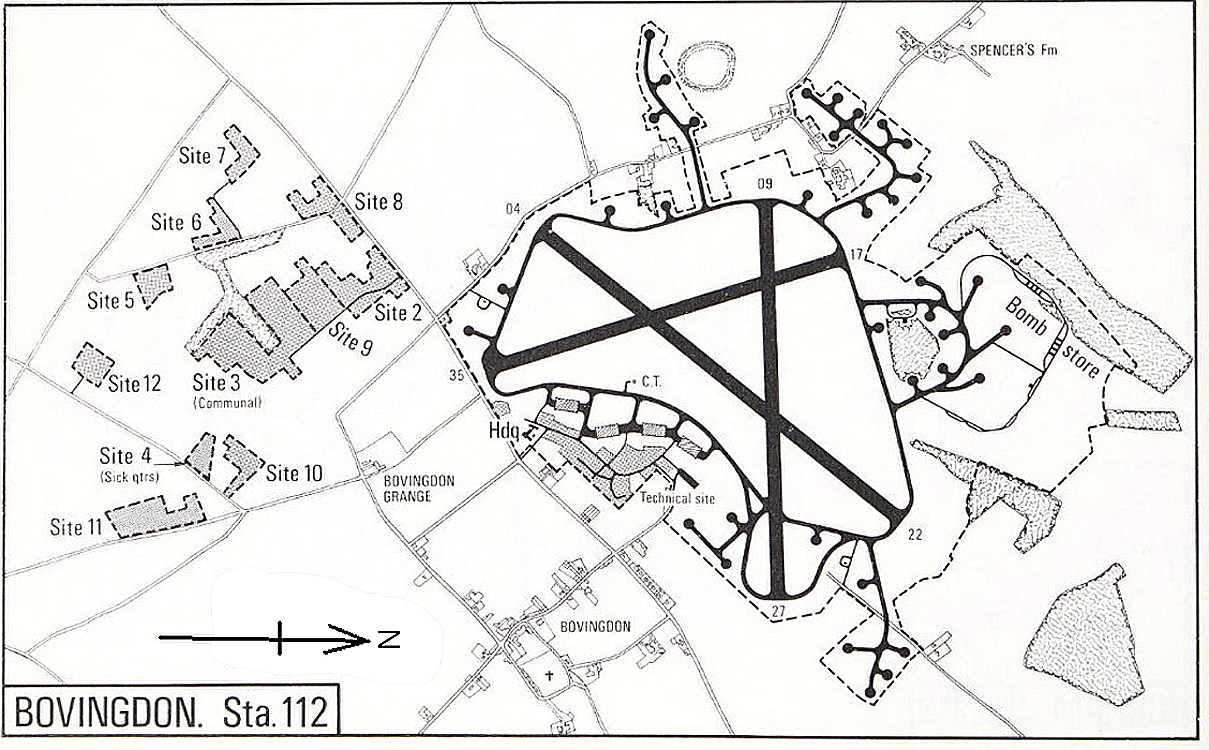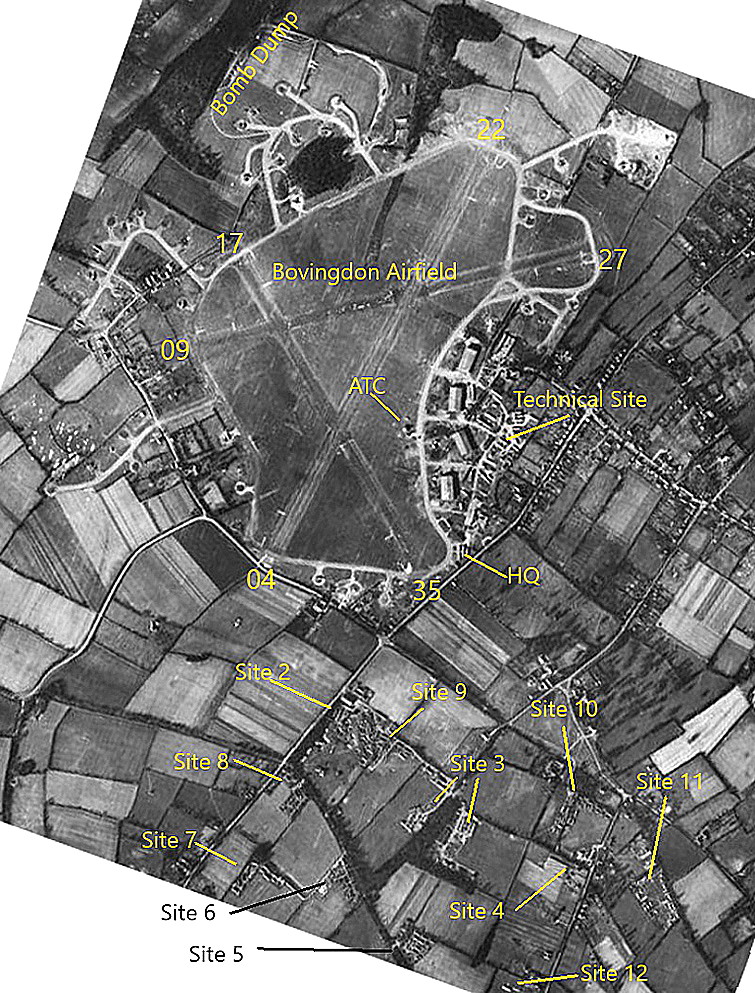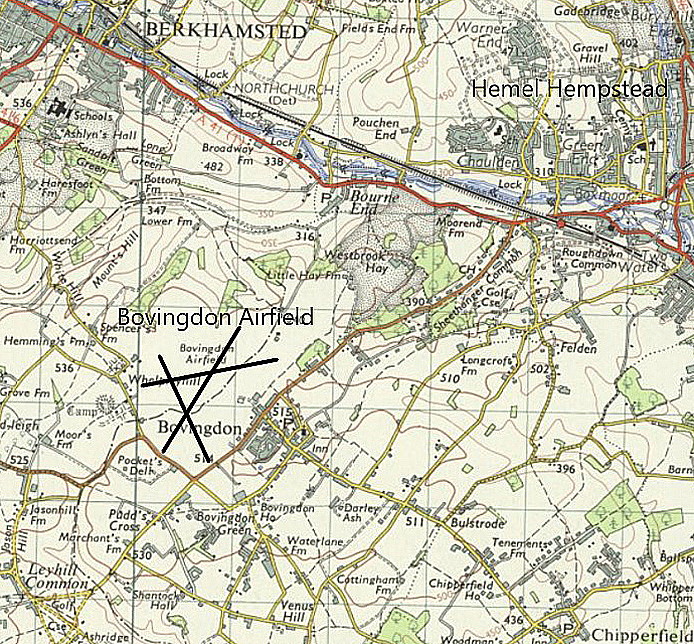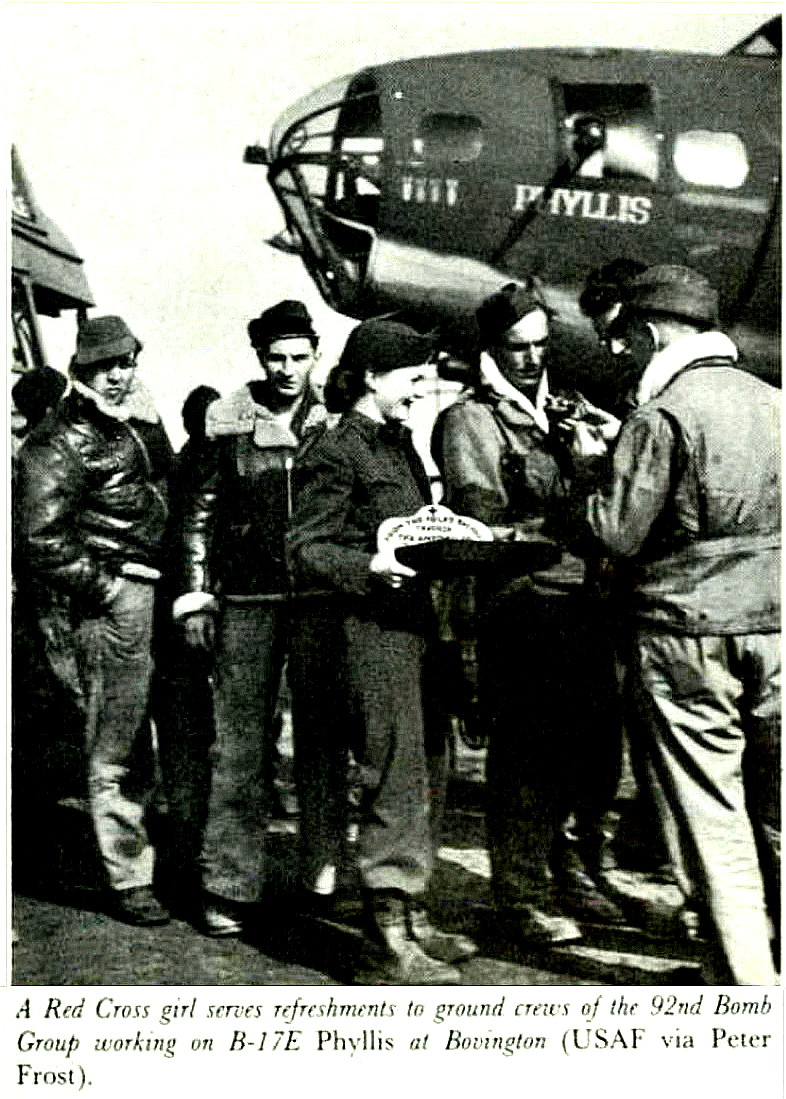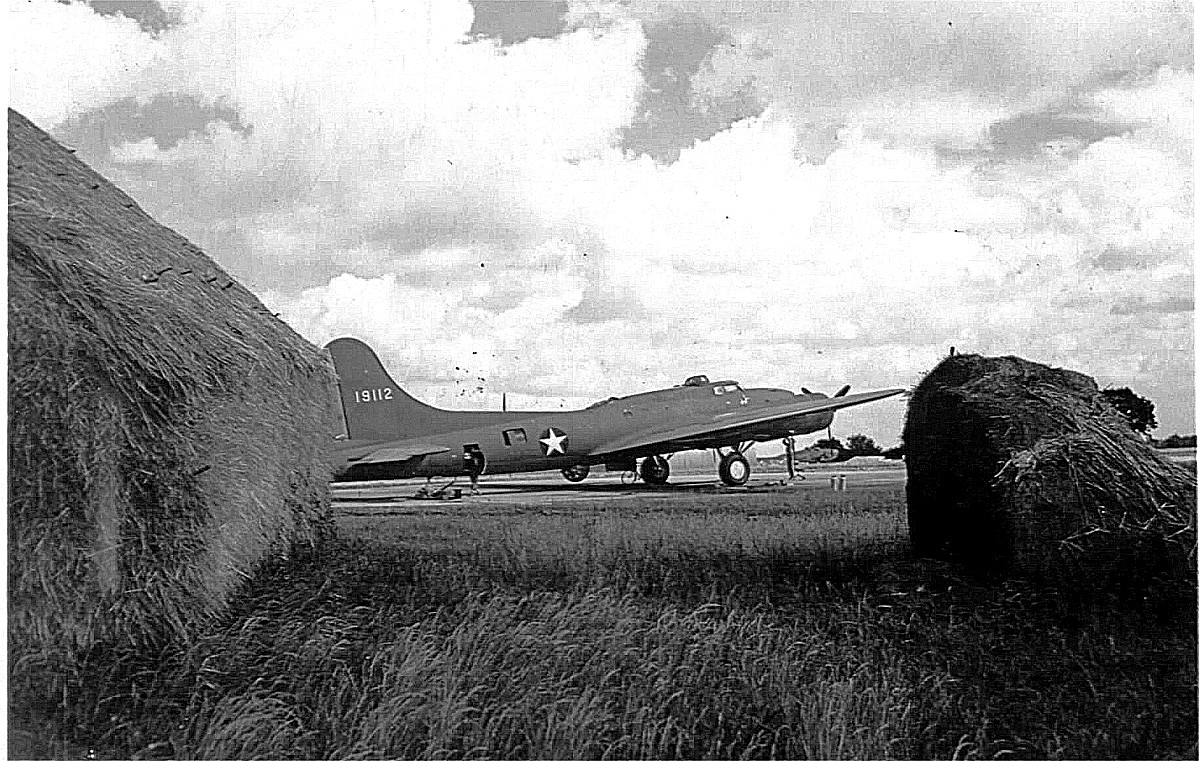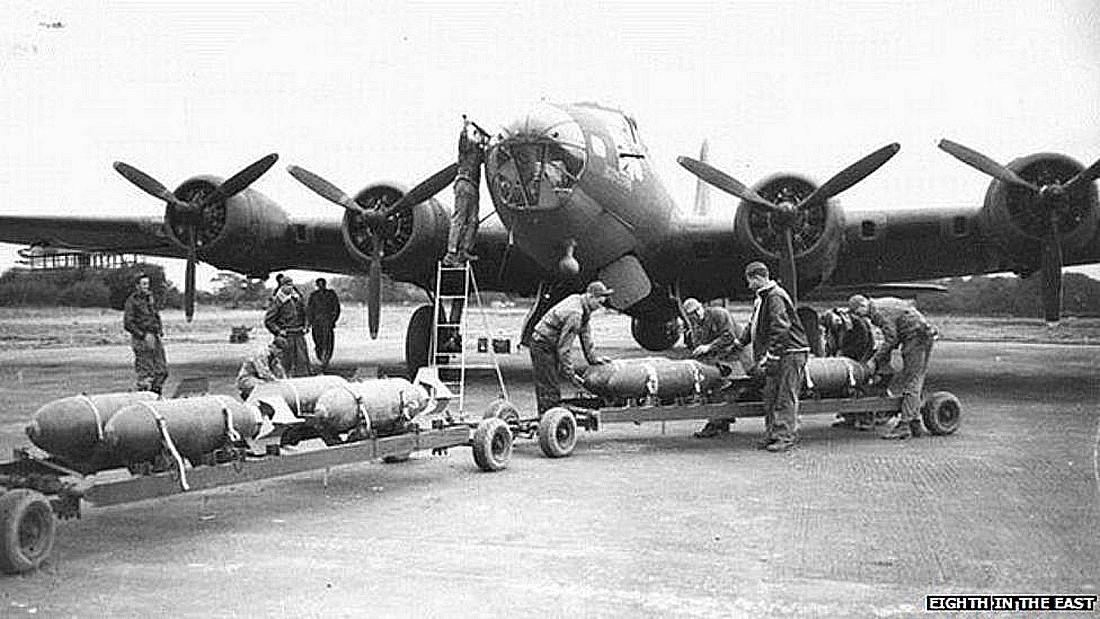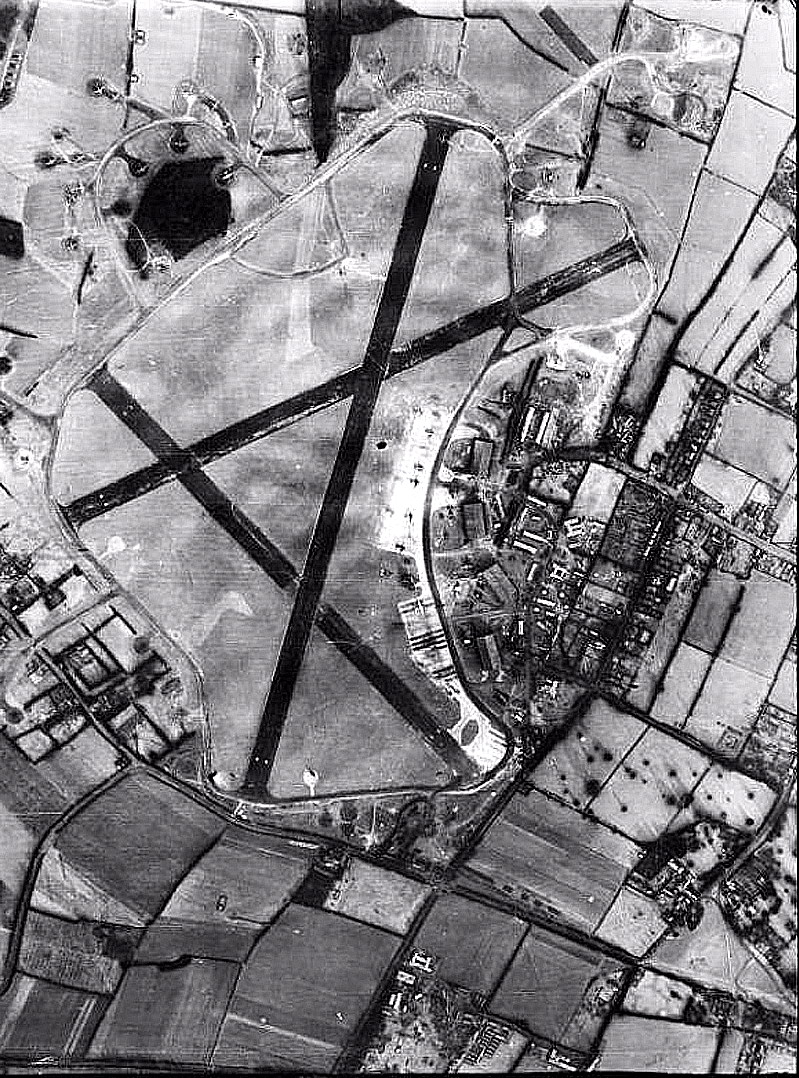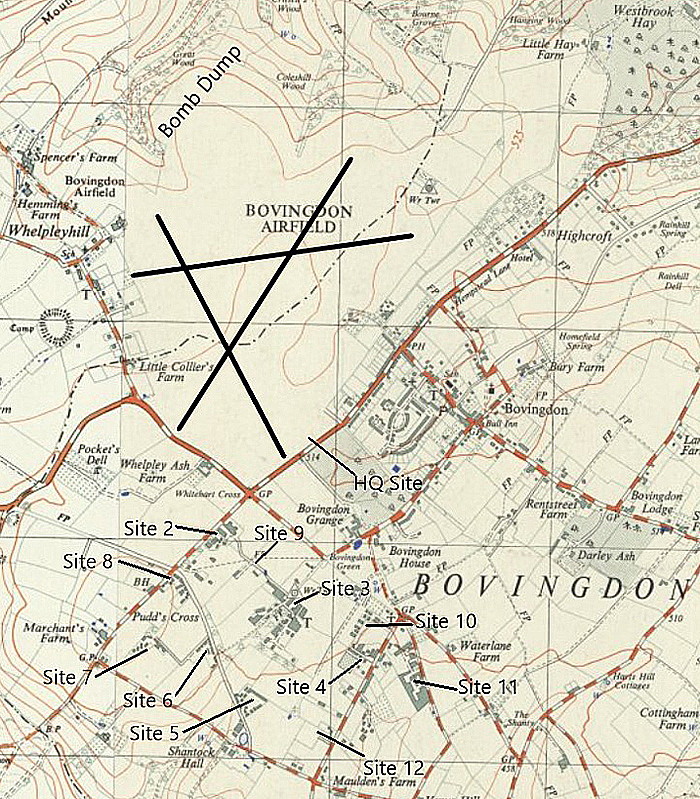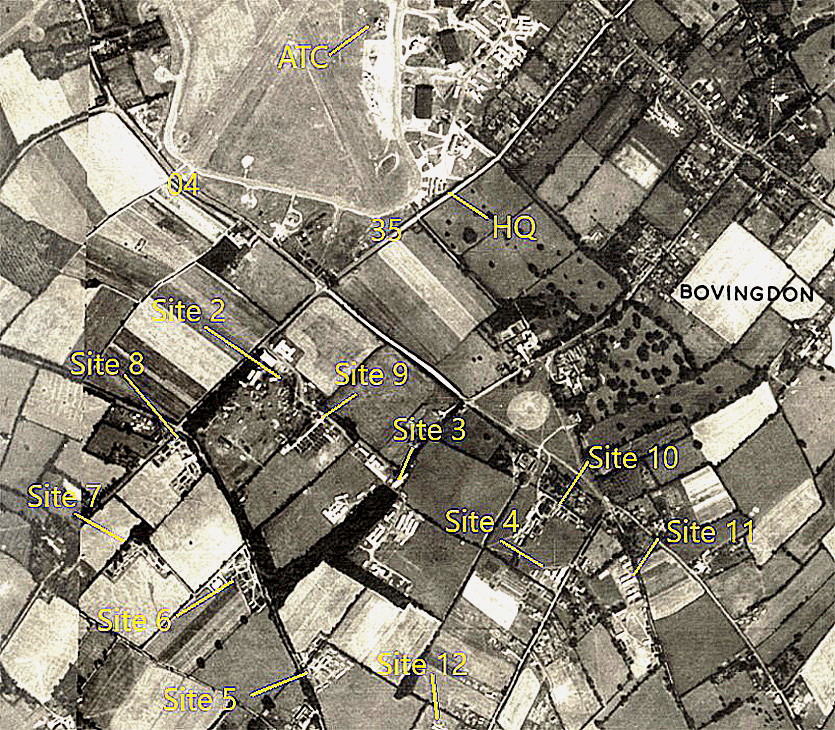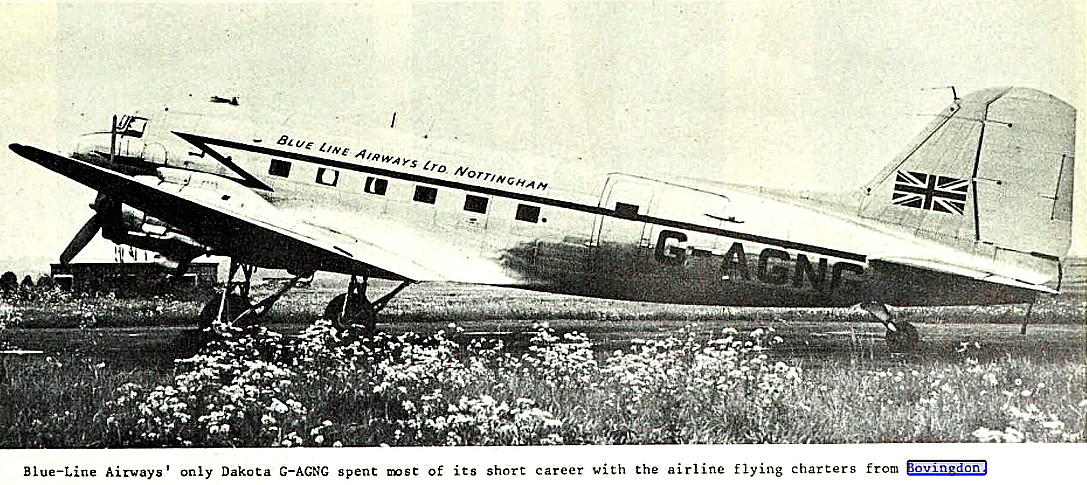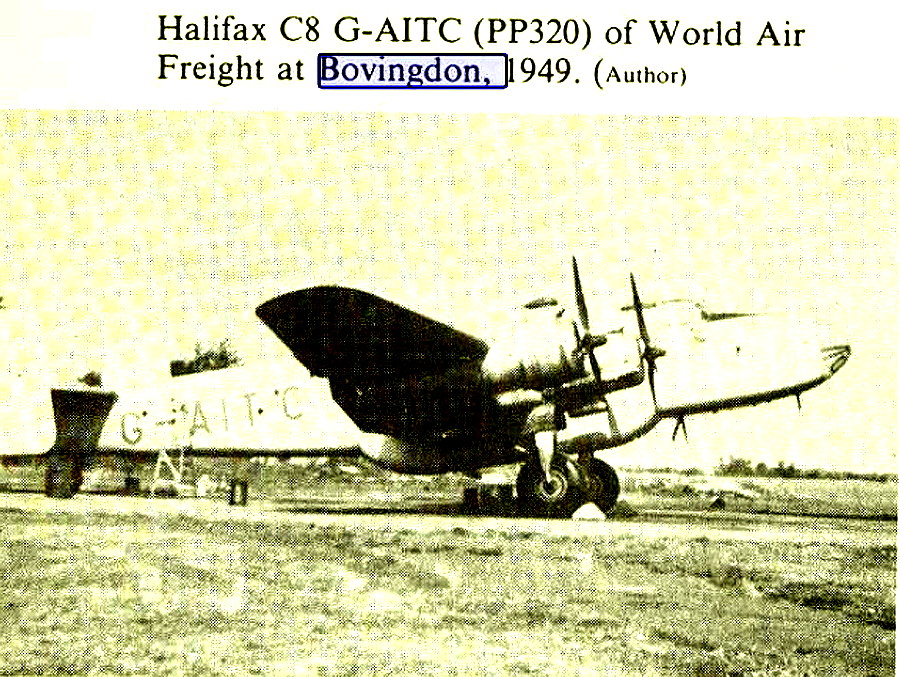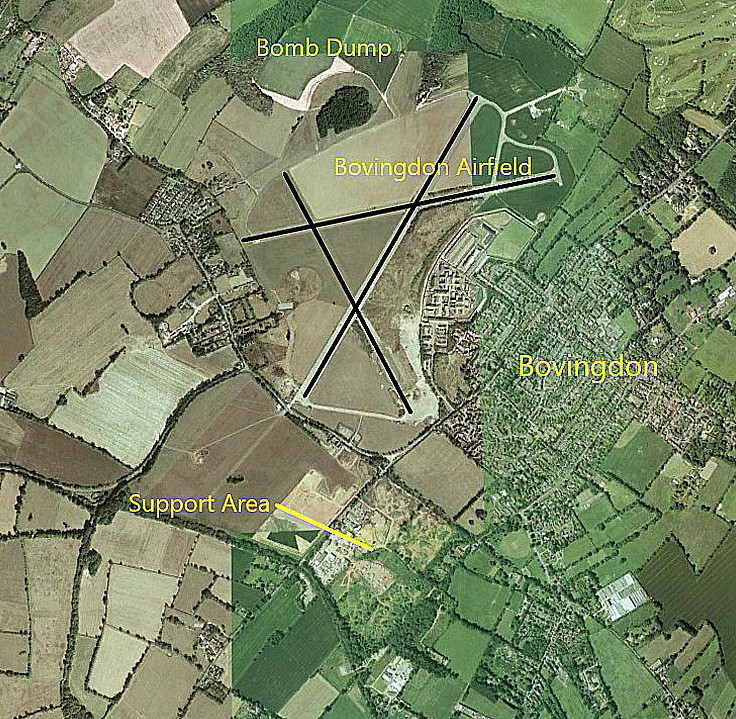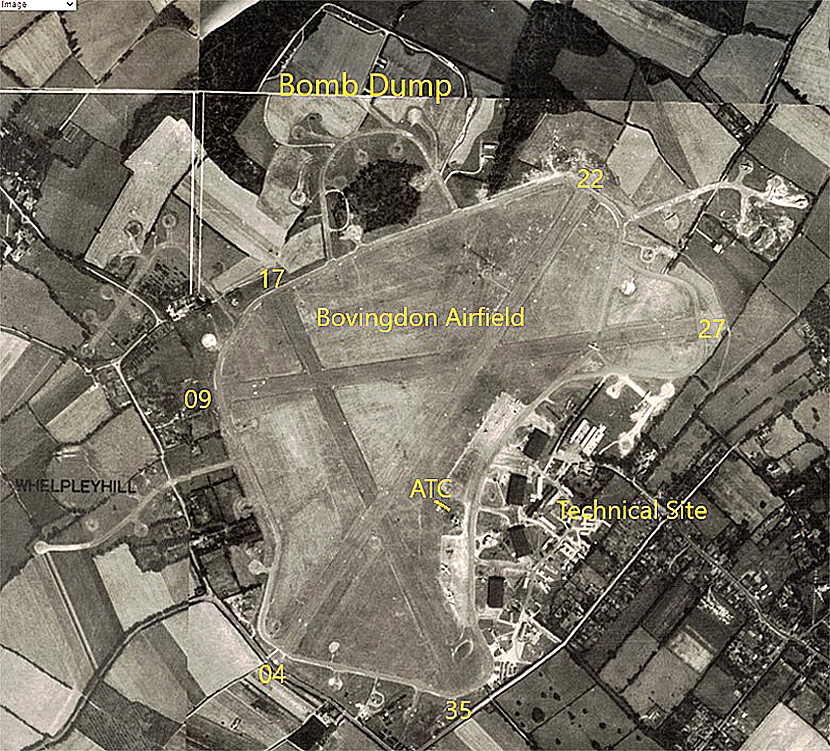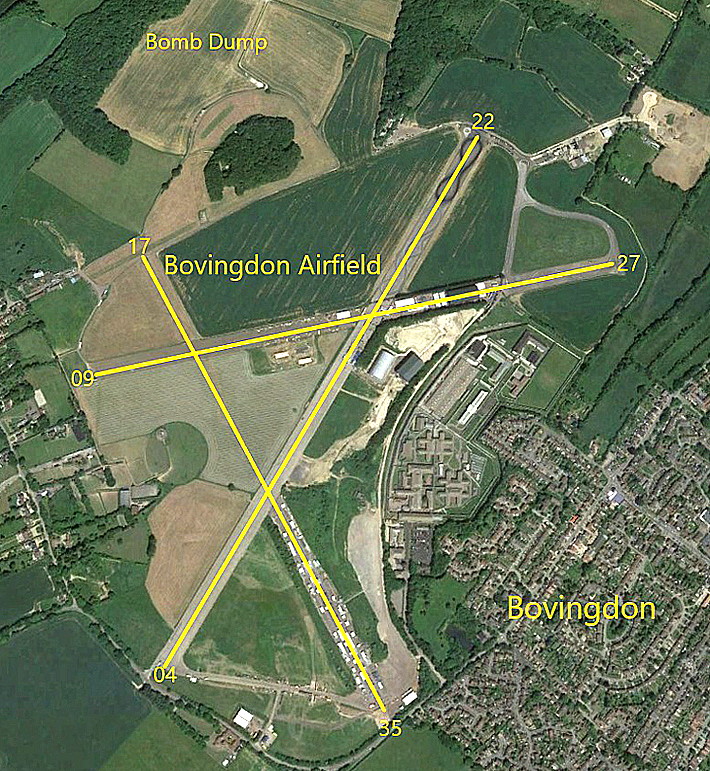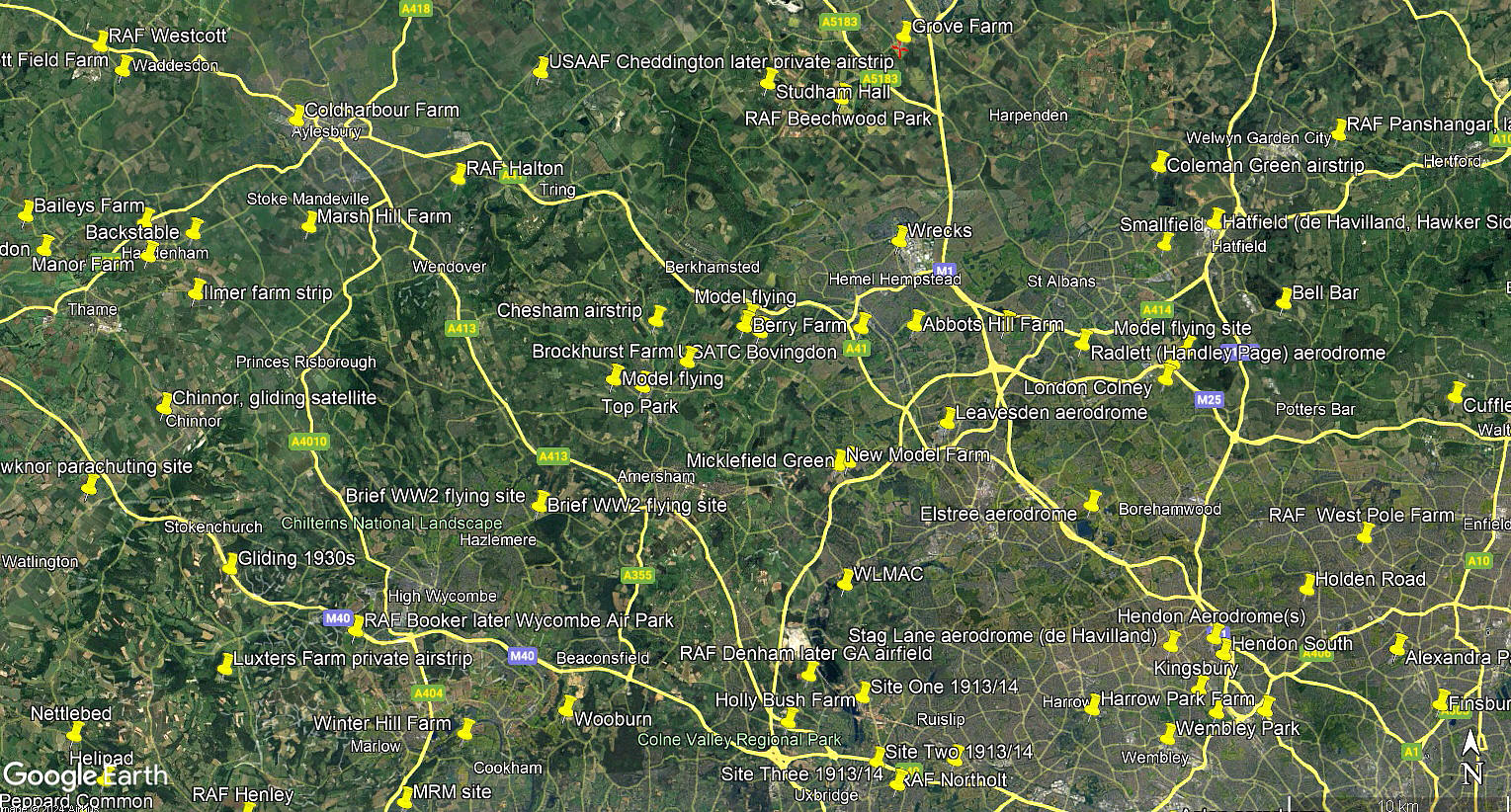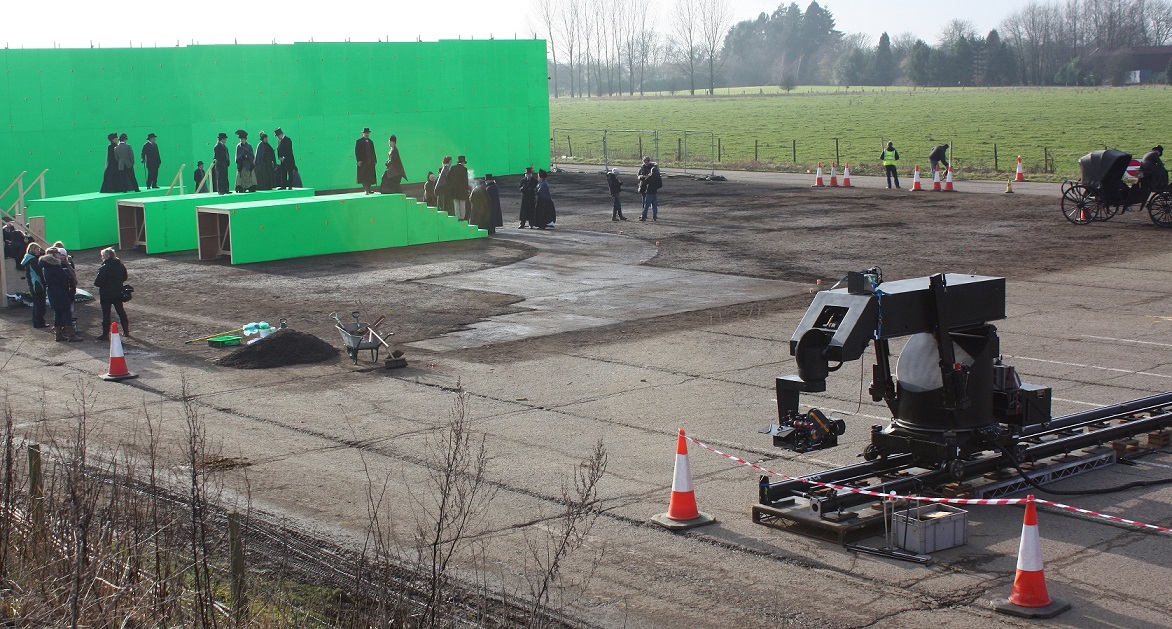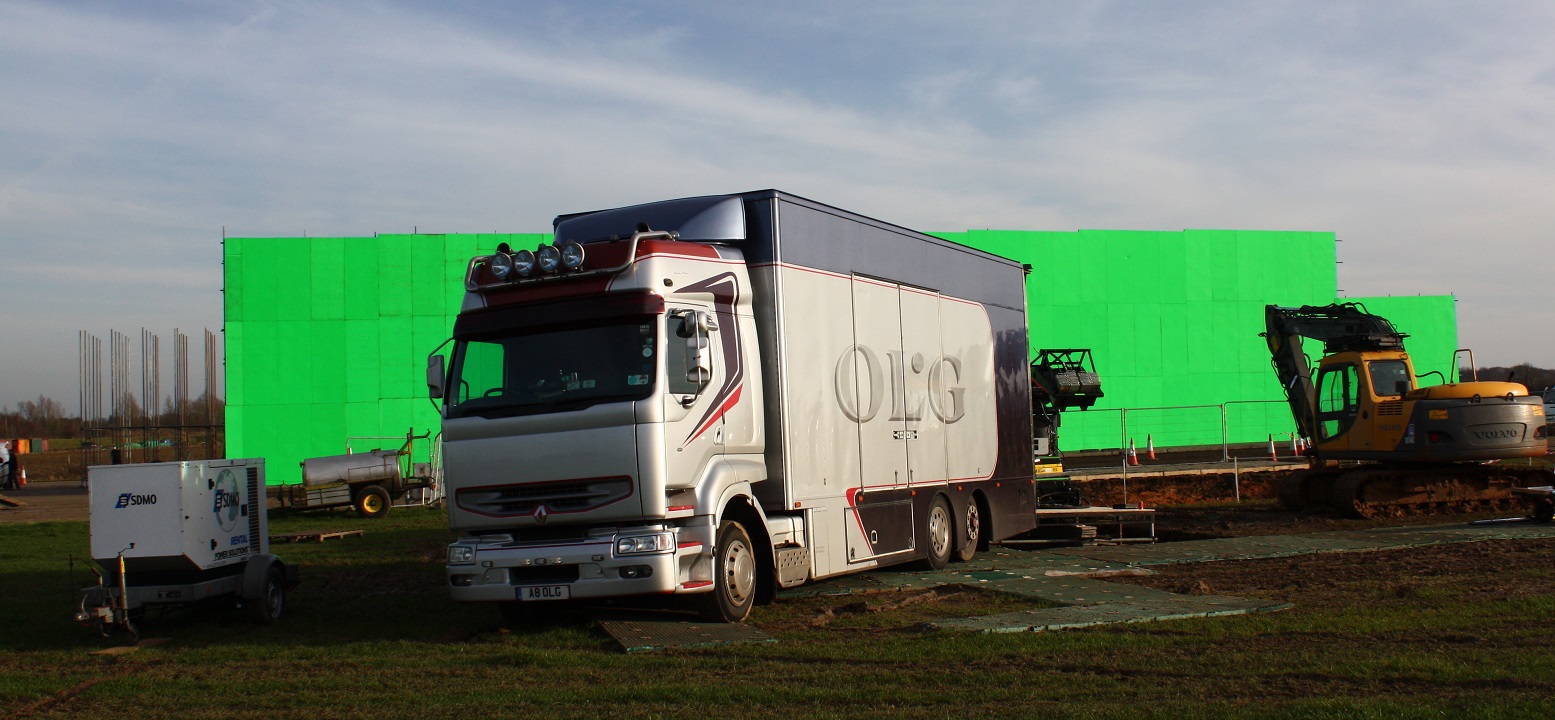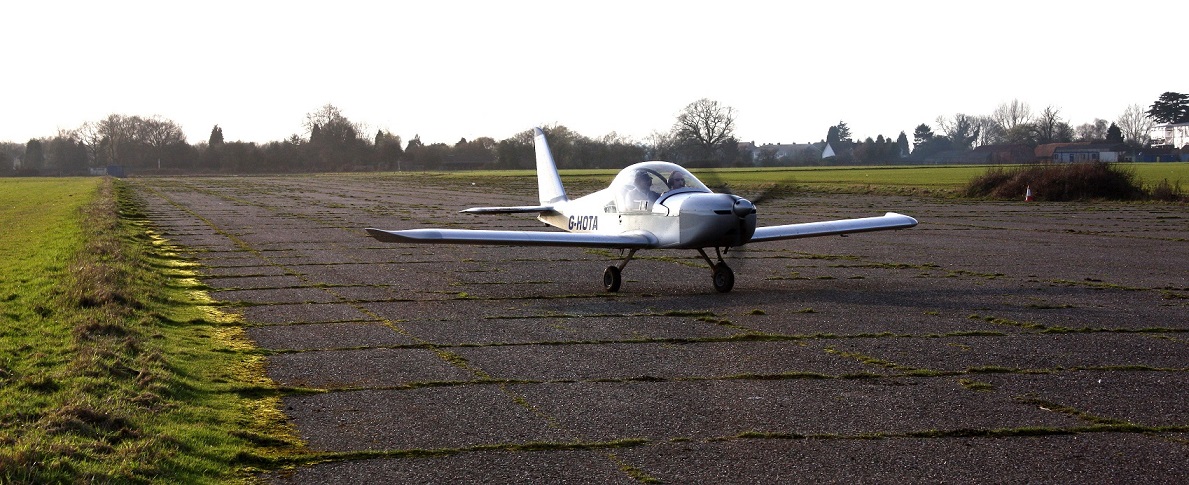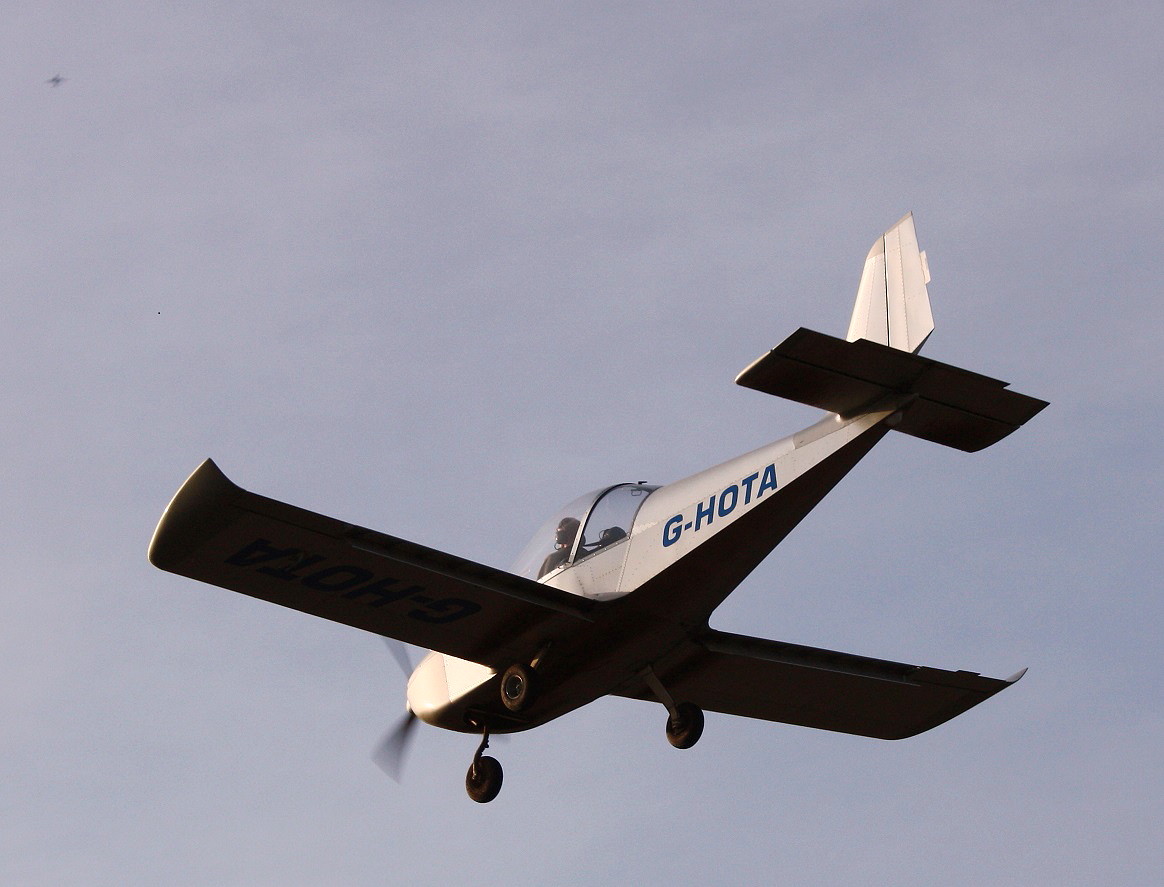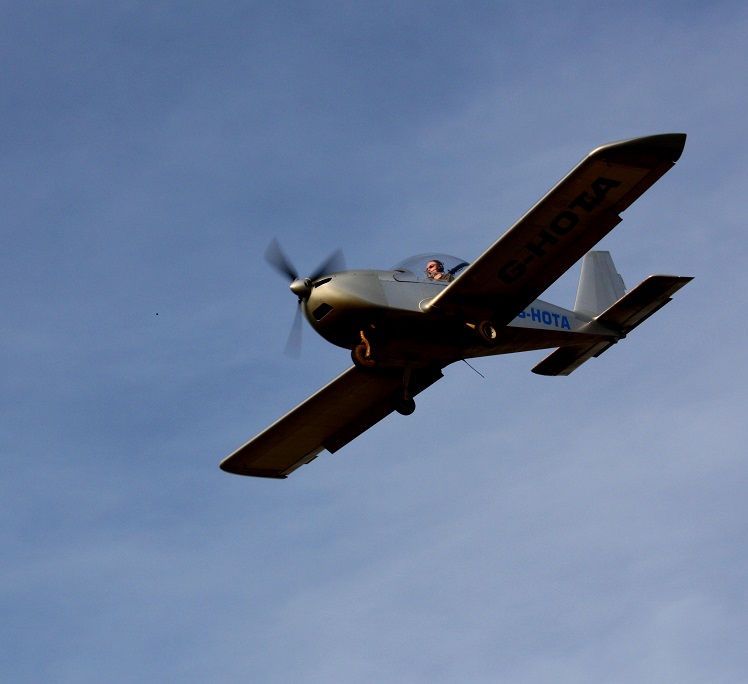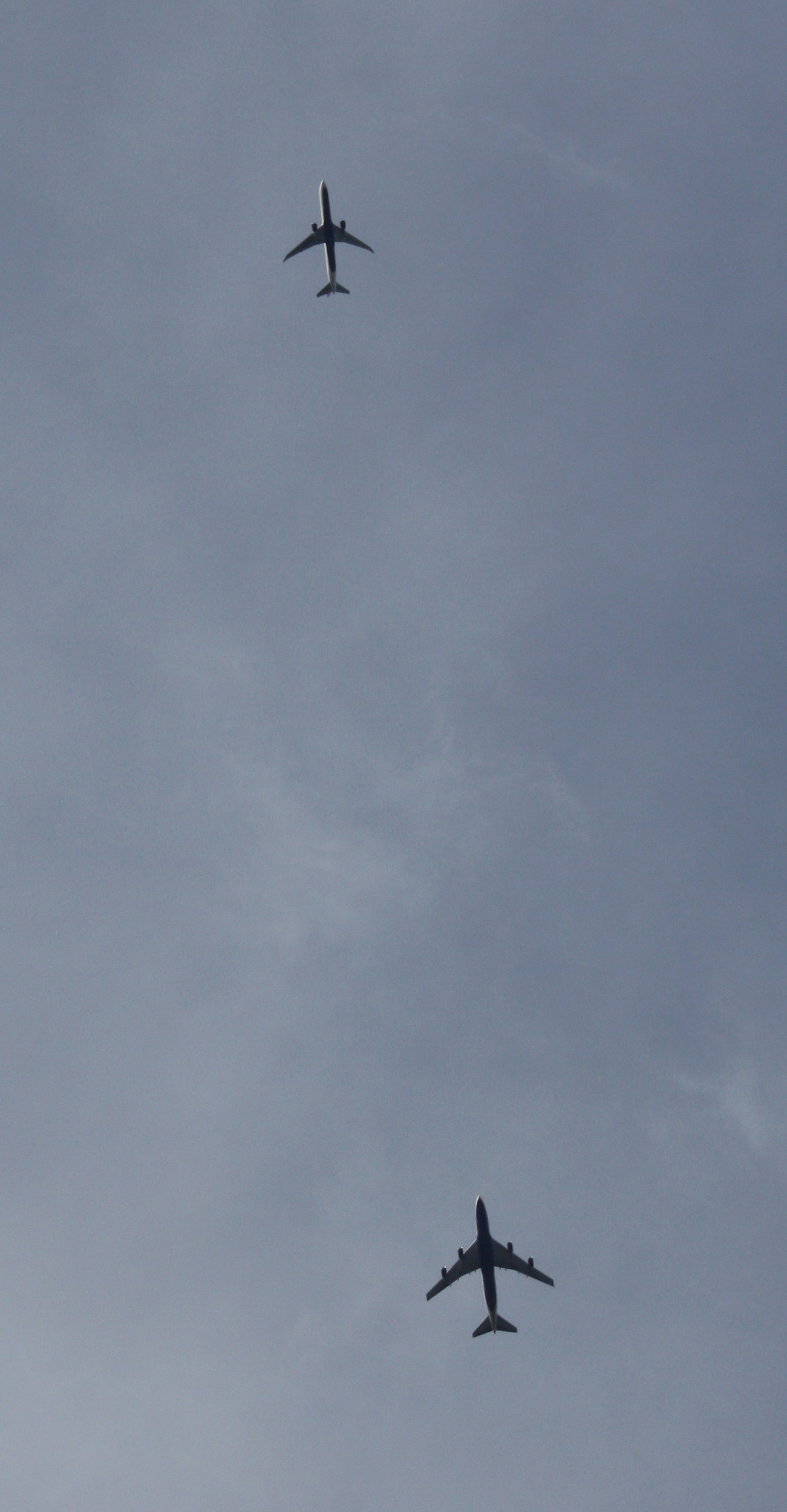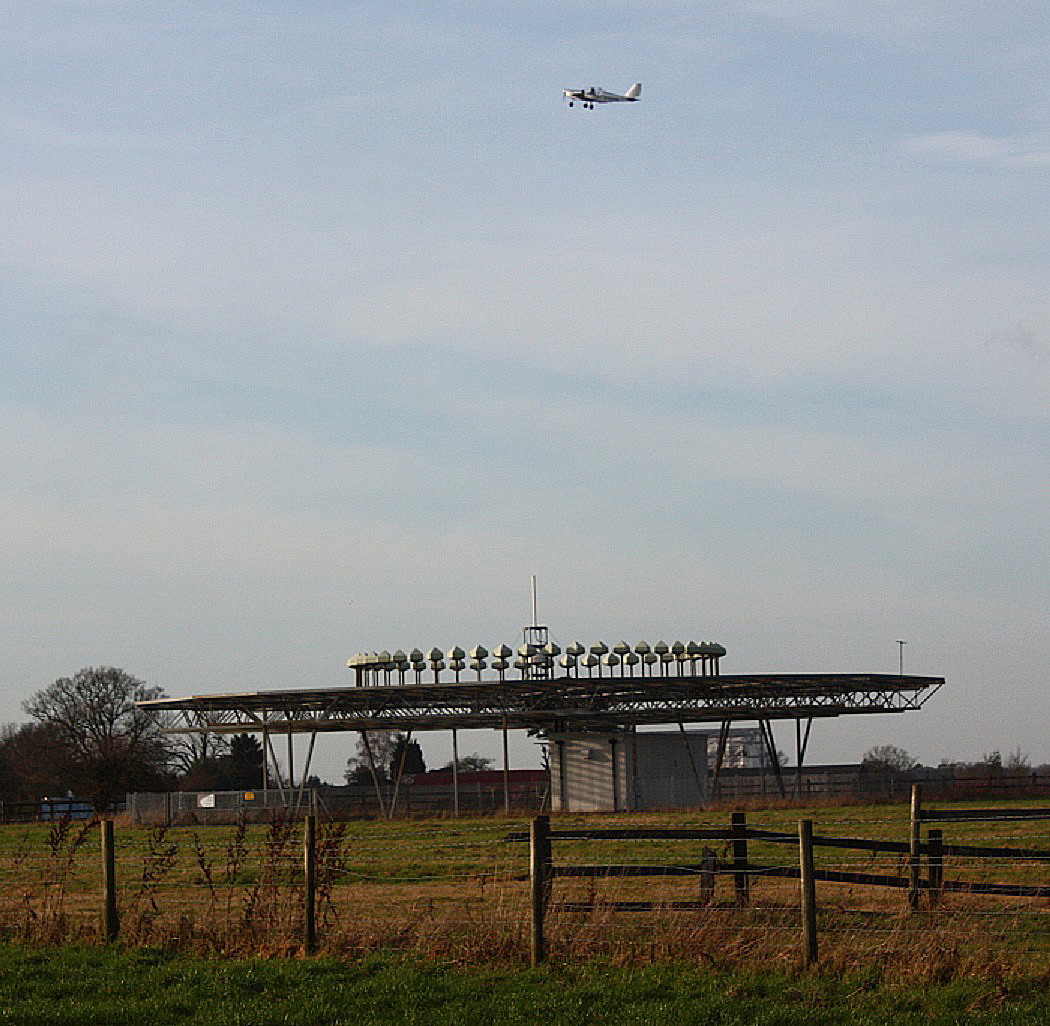Bovingdon
BOVINGDON: Military aerodrome allowing civil aerodrome use after 1945(?)
(Once known as BOVINGDON AIRPORT)
Note: All pictures by the author unless specified.
NOTES: This aerodrome was built during 1941/42 as a standard Class A RAF airfield. On the 15th June 1942, No.7 Group Bomber Command arrived. Operational missions were flown during June and July until the base was then taken over by the USAAF in August.
Military user: WW2: 8th USAAF
USATC: 1st Combat Crew Replacement Group, 11th Combat Crew Replacement centre (main unit).
Also: 328th Service Group, Eighth Air Force Service Command
18th Weather Squadron, 26th Station Complement Squadron and also Headquarters and Headquarters Squadron for the Eighth Fighter Command.
It appears that the primary purpose of BOVINGDON was to support Eighth Air Force H.Q, and the Air Technical Section which were operating a wide variety of aircraft types. Indeed, it is claimed that General Eisenhower's personal Boeing B-17 Fortress was based here. One unique aspect about BOVINGDON is that journalists from the U.S.A. were trained to fly on missions into Europe. Due to these missions being so dangerous. with so many aircraft being shot down, and a few reporters losing their lives, that part of the American propaganda exercise was curtailed.
Largely forgotten about today of course, when the USAAF were in command it was a very important base - not least for publicity purposes. For example several major American film stars were assigned to serve here; Clark Gable, James Stewart and William Holden were serving as aircrew in the USAAF.
Also, some very famous people paid a visit: Bob Hope, Frances Langford. Mrs Eleanor Roosevelt and last but certainly not least - the Glenn Miller Band.
92nd Bomb Group
The history of the USAAF bombing on operations here is rather complicated. But it seems, the 325th, 326th, 327th and 407th Bombardment Squadrons did perform a few missions during September and October 1942 before being relegated to a Boeing B-17 Flying Fortress Combat Crew Replacement Unit. But it seems, it was later transferred in January 1943 to ALCONBURY to become an operational combat group.
BUT, IT IS NOT SO SIMPLE
It now appears that although most of the the 92nd Bomb Group departed to ALCONBURY, the 326th Bomb Squadron remained here to form the 11th Combat Crew Replacement Unit using their Boeing B-17E Flying Fortress. It seems that most combat crews on the B-17 were trained here before being assigned to their operational bases. This CCRU was disbanded in September 1944. It then became the base for the European Air Transport Service, (EATS), and many thousands of American military personnel came back here to the 'air terminal' before going home.
THE POST WAR PERIOD
BOVINGDON was returned to RAF control on the 15th April 1947 and the Ministry of Civil Aviation was allowed to use BOVINGDON for airline use. One aspect of BOVINGDON that I was unaware of is that due to its elevation of 525ft above mean sea level, BOVINGDON was often clear of fog when HEATHROW and RAF NORTHOLT were forced to close, especially during the winter months. It seems that BEA (British European Airways) flights were regular visitors in such conditions.
BOAC (British Overseas Airways Corporation) had a maintenance facilty here, (before HEATHROW became available), as well as numerous independent operators. During the 1950s both military and civilian entities used this location. With the USAF Third Air Force Headquarters at RAF South Ruislip and the Headquarters of RAF Fighter Command at Bentley Priory being 'relatively close', many service aircraft types were to be seen here.
THE AMERICANS RETURN
In May 1951 the USAF, (USAAF in WW2), returned establishing their 7531st Air Base Squadron using Douglas C-47 Skytrains. (It was the RAF who coined the name Dakota for the C-47). The USAF departed once again in October 1962. Around this period the RAF Fighter Command Communication Squadron were also based here before transferring, (I believe?), to RAF NORTHOLT. This being after European civil airline operations moved across to HEATHROW.
ANOTHER RAF PHASE
Also during the 1960s RAF Transport Command (Southern Communication Squadron) were based here. They operated Avro Anson, de Havilland Devon, Percival Pembroke and Beagle Basset types. In addition the Air Training Corps 617 Gliding School used BOVINGDON from 1968 until 1970.
FINAL CLOSURE - WELL ALMOST
This came about in 1972, but, the western part of runway 09/27 has remained to be used by light aircraft, this being known as BERRY FARM. Still in use, in 2025 at least. (See below)
Post 1945:
RAF Coastal Command Communications Flight (Avro Ansons)
USAF 1858th Airways and Air Communications Service Flight
RAF 207 (Southern Communications) Sqdn (Beagle Bassett C.1s, de Havilland DH104 Devon C.2s & Percival Pembroke C.1s)
Charter/air taxi: Air Charter, Air Contractors, Air Freight, Air Transport Charter, Blue-Line Airways, Bond Air Services, British American Air Services, British Nederland Air Services, Eagle Aviation, Hunting Air Travel, World Air Freight
Gliding: 1968 to 1970 only? Air Training Corps
Maintenance: Post WW2: Airtech, BOAC, Field Aircraft Services
Location: 2nm SW of Hemel Hempstead, 7nm W of Watford
Period of operation: 1942 to 1972 (Some limited GA use since)
Runways: 04/22 1463x46 hard 09/27 1280x46 hard
17/35 1188x46 hard
2000s: 08/26 600x45 hard
Notes: This fabulous picture from a postcard was kindly sent by Mike Charlton who has an amazing collection. See, www.aviationpostcard.co.uk
However, for me it raises a couple of questions about which I hope somebody can kindly offer advice. The first being that clearly a number of people in civilian clothing are walking out to board an American military Douglas C-47, presumably a USAF example? But, also in the picture is a Boeing B-17 Fortress! Presumably not then used as a bomber - so what purpose was this serving?
A MICHAEL T HOLDER GALLERY
I will gladly admit then when starting this project now around a quarter of a century ago in 2024, I certainly knew of BOVINGDON, but had no idea about it having such a rich and diverse history. So, when Mike Holder, a great friend of this 'Guide', decided to investigate what else might be available and sent me these items, it was quite a treat.
THE USAAF IN WW2
Photo One with caption is from a USAF souce via Peter Frost. Photo Two, dated August 1942, is from the American Air Museum. Photo Three showing a B-17 being 'bombed-up' is not dated.
Photo Four is another aerial vertical showing the Support Area c.1950.
A COUPLE OF CIVIL AIRCRAFT TYPES FROM THE LATE 1940s, EARLY 1950s
This picture of the Douglas C-47B Dakota 4, G-AGNG operate by Blue Line Airways based at TOLLERTON is from British Independent Airlines since 1946 by A C Merton Jones.
The Douglas DC-3/C-47 has always been one of my favourite aircraft - a true classic. Not least because it has been so long-lived, (1st flight 1935), produced in huge numbers, (around 13,000+), and after WW2 so many had fascinating histories, being sold and sold and sold again. Some still flying.
This example is ex RAF, serial KK216. After being 'civilianised' it first went to BOAC, (British Overseas Airways Corporation), or as often known by rival airlines, (Boys Overseas After Crumpet). They had it registered from 14.02.45 until 07.01.49 - BUT - it was tranferred to the Irish register as EI-ADY from 27.05.48 until 25.10.48. I'm guessing of course, but perhaps to help Aer Lingus getting going?
Blue Line Airways had it registered to them for just over a year, from 10.01.49 until 01.02.50. It was then acquired by Eagle Aviation and based at ALDERMASTON airport from 07.02.50 until 24,01.51. Probably an 'airport' not much remembered these days? Much better later known as being a nuclear research establishment. The story runs out when, on 26.01.51, (for me anyway), it was sold to Canada as CF-GVZ.
This picture of the Handley Page HP.70 Halifax C.Mk 8, G-AITC (ex PP320), operated by World Air Freight, is from Halifax Second to None by Victor Bingham. I may well have my picture of this era incorrect, but it seems to me that the Halifax was much preferred after WW2 to being converted to freighters as opposed to the Avro Lancaster. That type, especially the later Lancastrian version, being converted for long-haul passenger carrying. Nobody today flying with airlines, even as 'baggage class' as I do, has no grounds for complaint - compared to being in a Lancastrian!
After being made redundant by the RAF, G-AITC went to the College of Aeronautics at CRANFIELD from 01.11.46 until 08.04.49. World Air Freight had it registered from 09.04.49 until 20.01.50. The reason for the registration being cancelled was because it had crashed at Brindisi in Italy on the 20th January 1950. I may well be mistaken (?), but I don't think a history of British air freight operations in the two decades after WW2 has been written?
The area view is from my Google Earth © derived database.
NOTES: RECORD BREAKING FLIGHTS
On the 15th September 1949 a de Havilland Hornet departed on a successful record air speed flight to and from Gibraltar.
In 1951 an Eagle Aviation Avro York left here for a thirty one thousand mile round trip to Iwakuni (Japan), Hong Kong and then to Porto Alegre in Brazil before returning to Luton.
SOME MEMORIES
As a youngster, (aged about 15 in 1962), I well remember arriving here by bike expecting to see nothing happening and watching a USAF C-47 taxy out and take-off. Thrilling stuff for an impressionable youngster in those days! It is perhaps hard to explain today how a young ‘reggie spotter’ from London Airport, (now HEATHROW), could be so enthralled? But, to get a sight of an American military aircraft in the vicinity of London was a distinct rarity.
I now find it very odd how our ‘mob’ behaved. We’d often cycle to DENHAM, FAIROAKS and WHITE WALTHAM, later when a tad older to GATWICK. But we mostly ignored NORTHOLT and ELSTREE. Why? I do remember one expedition to PANSHANGER, possibly via HATFIELD which was a reggie-spotters nightmare, as nothing could be seen at HATFIELD.
AVIATION TRADERS
It also appears that Aviation Traders Engineering who became quite famous after moving to SOUTHEND in 1949 were actually formed here in 1947 to sell aircraft and spares plus operating their Air Charter subsidiary company.
A FILM VENUE
In 1968/9 the producers of the Battle of Britain film used BOVINGDON as a location. For the scenes of French airfields possibly? The other UK airfields used were DUXFORD, HAWKINGE and NORTH WEALD. In about the same period some filming for Mosquito Squadron also took place here. Much later during February 2011 I was working on location for the second Sherlock Holmes film, and here are a couple of pictures of the filming on what I believe was once runway 04/22 at Bovingdon in 2011:
Large green-screen sets had been constructed on the southern half of runway 04/22 so I was interested to note that on the two days when flying was possible a flex-wing trike and a Team Eurostar used the western end of runway 08/26 (Once 09/27).
There was no obvious evidence that these could have been based here, (like a small hangar or barn), so I assume they’d somehow obtained permission to use it.
PLANNING PROBLEMS
Later I learnt that the owner of that section of the old aerodrome was having trouble with the planning authorities and sent out requests for people to provide proof that the runway was being used. I contacted him to offer my support in keeping this operation going - which I was very glad to do. He was pleased that I could offer photographic evidence of the runway being used. Here are a few pictures of the Evektor EV97 Eurostar G-HOTA using the runway.
THE 1970s
In 1977 the Piper Cherokee G-ATEM and Cessna F.172F G-AZTK were based here.
AN ANOMOLY?
There was another aspect about BOVINGDON which intrigued me. Very often the concrete runways on disused airfields are dug up and used as hardcore for major new road projects etc. But, usually some sign of the original infrastructure remains such as a hangar, the odd building or Nissen hut and quite often the control and/or watch tower – as is the case at nearby LEAVESDEN. At BOVINGDON the exact opposite appeared to be the case although I didn’t have access to the entire site which includes a prison.
THE BOVINGDON VOR
There is a VOR on BOVINGDON which meant I sometimes had the opportunity to watch light aircraft, exec helicopters and jets, and of course airliners passing overhead, or when foggy or with a low cloud base could hear them instead. Out of interest I would sometimes point to the VOR and ask members of the film crew what it was? Nobody knew.
Richard Greenfield
This comment was written on: 2017-08-01 15:28:54I was a regular at Bovingdon in the '60s'. I have full details of units and types based there and of the many different visitors. I will be happy to share information.
Reply from Dick Flute:
Dear Richard, Many thanks indeed for your kind offer to share your information. If you could be kind enough to e-mail me with some details this will be much appreciated - especially as it concerns the 1960s for which, as you can see, I have very little information. Best regards, Dick
We'd love to hear from you, so please scroll down to leave a comment!
Leave a comment ...
Copyright (c) UK Airfield Guide















